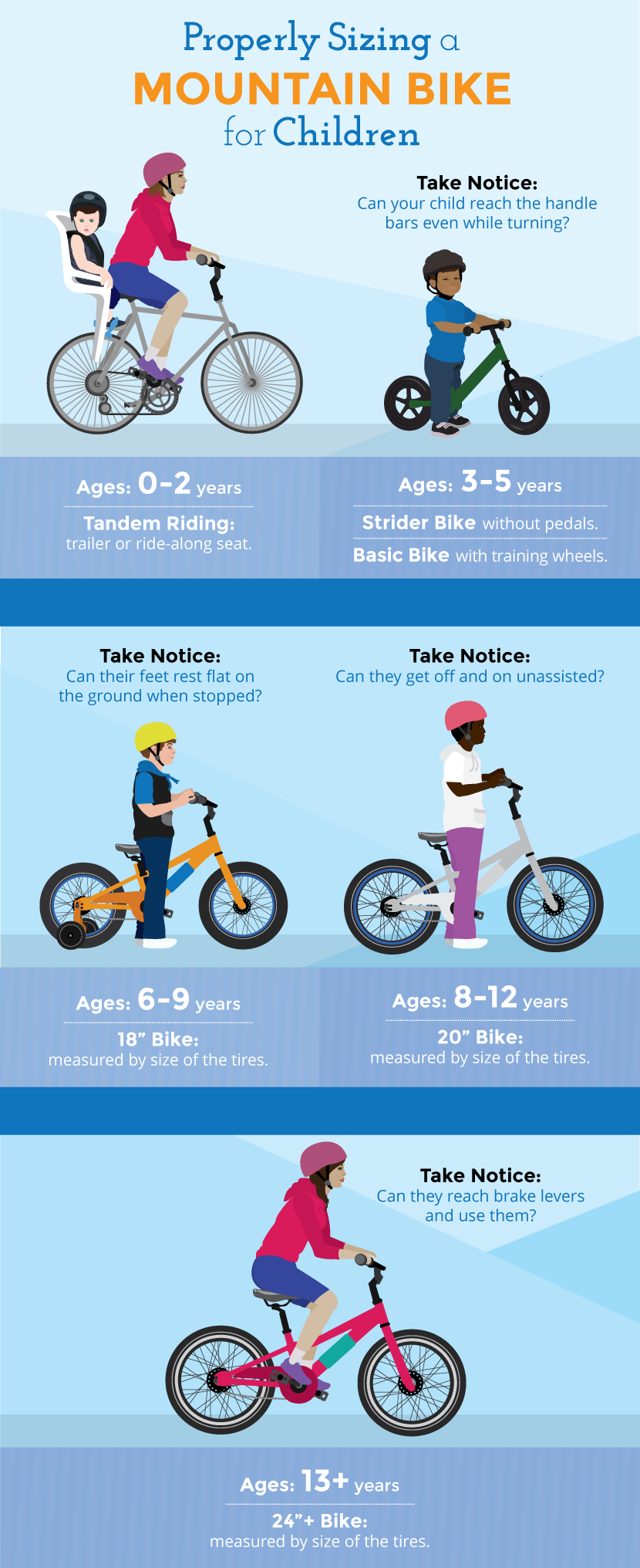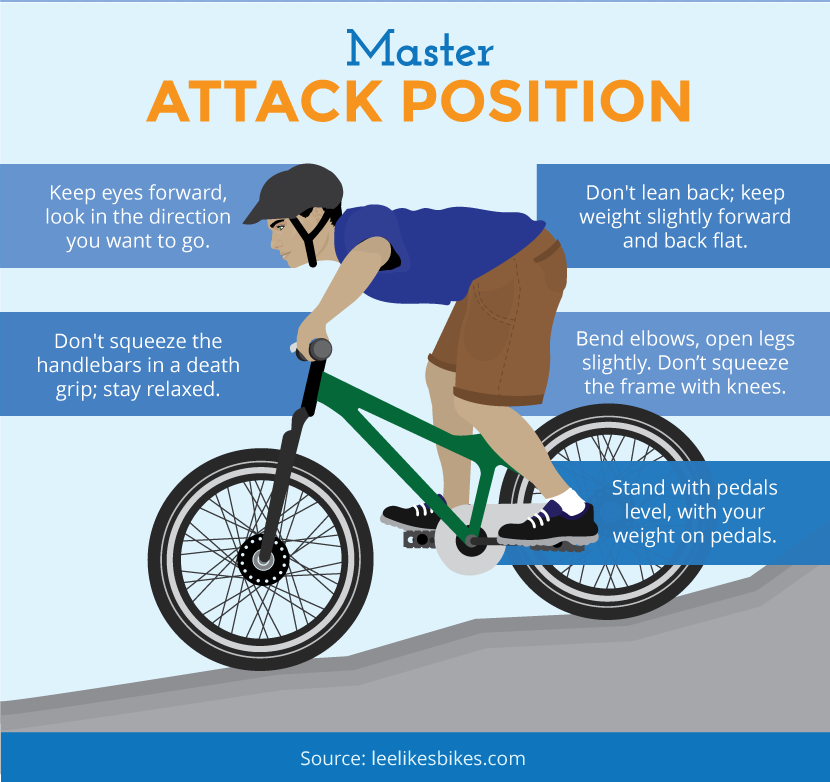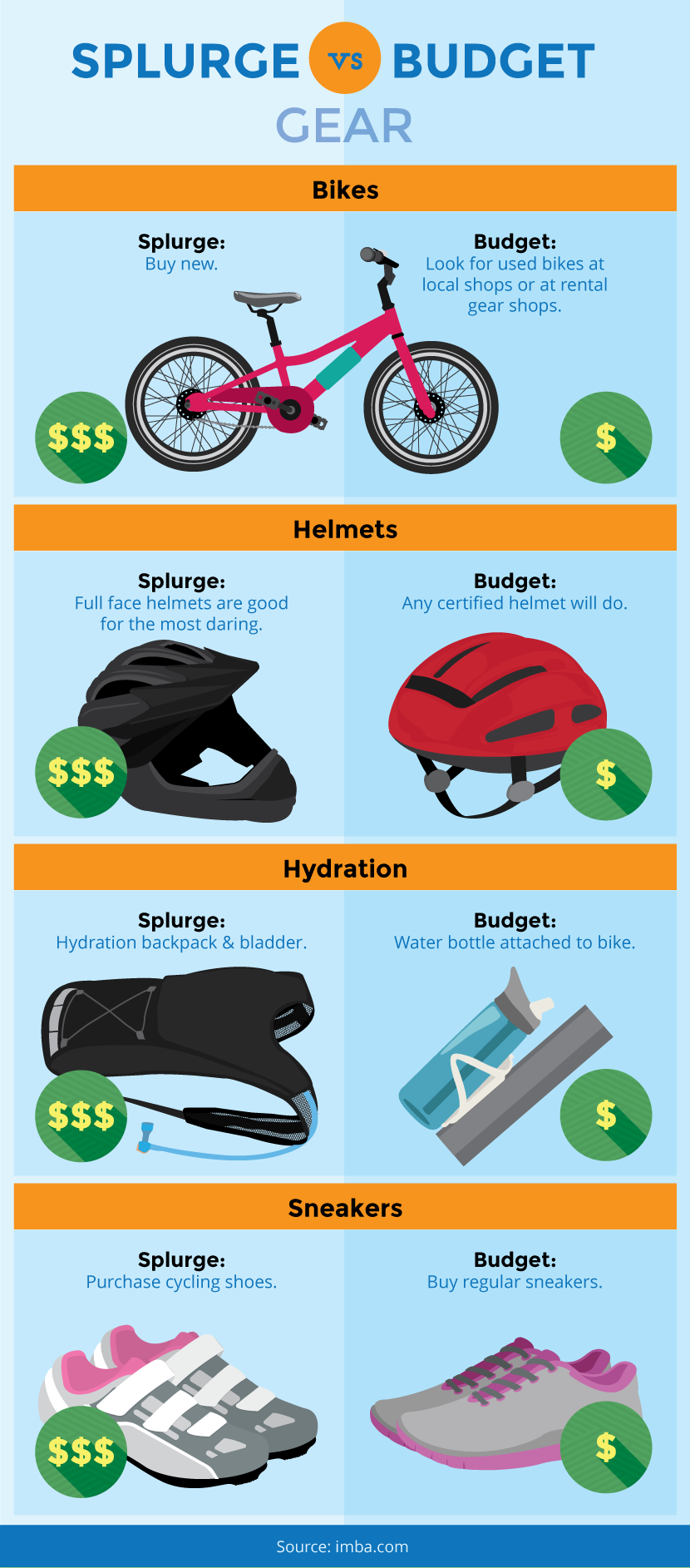Mountain Biking with Kids
If you’re a mountain biker, you know the joy of navigating single track, banking a turn, and challenging yourself on terrain as you whip past boulders, trees, or mountain peaks.
But how and when to introduce your kids to the sport? Children can absolutely mountain bike and enjoy the many benefits of this sport: building fitness, gaining confidence, and enjoying time in the outdoors.
All they need is the correct gear, instruction, and practice. Here’s how to get kids on two wheels and on the trail:
Start Them Early
Most quality mountain bikes, padding, and apparel are sized for kids over age eight, but that doesn’t mean you should leave younger kids at home.
Consider biking tandem with babies and toddlers (on wider, flatter, or paved trail), or invest in balance bikes for toddlers and preschoolers.
These small bikes without pedals are ideal for kids who have only recently mastered learning to walk, and teach balance while giving young children a feel for cycling.
When kids are approximately six to eight years old, most will be ready for their first mountain bike (see section on sizing and selecting bikes below) and their first taste of longer distances and dirt riding.
Start on paved bike paths or rail trails, focusing not on the journey, but on the destination. Bike to a favorite playground, a lake or river to swim in, or to a picnic location.
Parents enjoy the process of pedaling along the trail, but kids? Not so much.
Allow kids to progress from paved trail to dirt by beginning with wider, smoother dirt roads like Jeep roads or Forest Service roads,
and graduate to pump tracks (bike parks) and single track (trail-width track) slowly.

Teach Proper Technique
Kids who have previously only biked on pavement need to learn proper mountain biking technique before tackling single track.
Teach kids what’s commonly known as “default position” or “attack position”: stand with pedals level, elbows bent, and weight centered over the bike.
Remind kids to remain relaxed; no stiff muscles or death grips allowed.
No matter the terrain, whether it be steep, rocky, or technical, teach kids to keep their head up and their eyes focused on the trail ahead of them, not on the obstacles they’re currently trying to avoid.
Looking at obstacles such as trees, trail edges, or boulders just about guarantees you’ll hit them.
Encourage kids to practice often, even if just at home. Grass, dirt, and even curbs, gutters, and stairs can be great places to hone mountain biking skills between trips to the trail.

Get the Right Gear
While expensive clothing is not necessary for mountain biking, it’s essential to outfit your kid with a quality bike and helmet.
If on a limited budget, consider buying a used mountain bike from an online community page like Craigslist or from your local bike shop (after all, kids outgrow them all the time).
Alternatively, prioritize buying a quality bike frame, and upgrade individual components as budget allows. Before heading into a bike shop to purchase a mountain bike, ask yourself the following questions:
- Is this bike for a boy or girl?
- How old is the child, and how tall?
- What size is his or her current bike (if any)?
- What is the child’s inseam measurement?
From this information, as well as the information on our sizing chart, your local bike shop employee should be able to correctly size your child to a bike.

In addition to a quality bike, children need protection when riding mountain bikes. Make sure your child has a cycling helmet (not a skateboarding helmet),
with ventilation and coverage over his or her forehead, and that it stays snug when strapped, as opposed to sliding around his or her head. Padded clothing is a great choice for older kids and teens –
G-Form makes shorts and shirts with built-in padding that’s machine washable – but this type of specialized apparel can be hard to find for younger kids.
In this case, simple athletic shorts and a T-shirt will do fine. Shin guards and elbow pads are useful, but not necessary until children are tackling more advanced single track.
Where to Find Single Track – at Home and Away
At home, contact local biking shops for advice on the best trails for kids. Visit the webpage for your local national forest service,
as many of their hiking trails are suitable for beginner mountain bikers as well (just be sure to check the rules for pedestrian-only trails). Consider joining a local mountain biking club.
For instance, many International Mountain Biking Association (IMBA) clubs host Take a Kid Mountain Biking Day events and additional events designed to get kids out on trails.
While on vacation is a great time to enjoy mountain biking as a family. If staying in state or national parks, ask park rangers for the best public access trails in the area;
most can give parents a map of local trails that are bike-friendly.
If your travels take you near any ski resorts in summer, these resorts are a great place to mountain bike; many ski resorts offer ticketed single track as a source of income in their off-season,
and some even offer gravity-based mountain biking (also called lift-served), where families purchase lift tickets to ride up the mountain and bike down.
These trails will have advanced and expert routes in addition to intermediate or sometimes beginner ones, so pay close attention to trail designations.
Ask at the bike rental shop if mountain bike clinics or classes are offered for kids.

Safety first
Mountain biking can seem intimidating to some kids. Others will be fearless. Both reactions can end in injury. Hesitant kids may try to navigate tricky terrain too slowly,
losing balance in the process, and overconfident kids can tackle terrain at too high a speed, resulting in a spill. Help fearful kids by encouraging plenty of practice at home, on flat ground. Repetition is key to gaining confidence.
Teach overconfident kids by example, displaying caution where relevant. Never push kids onto terrain they don’t feel ready for, or into a group of riders above their ability level.
With the correct protective gear and a correctly fitted bike, most kids find that sweet spot of confident riding in no time. Model trail etiquette and healthy riding to kids, and they’ll become great mountain biking citizens!
Embed the article on your site

